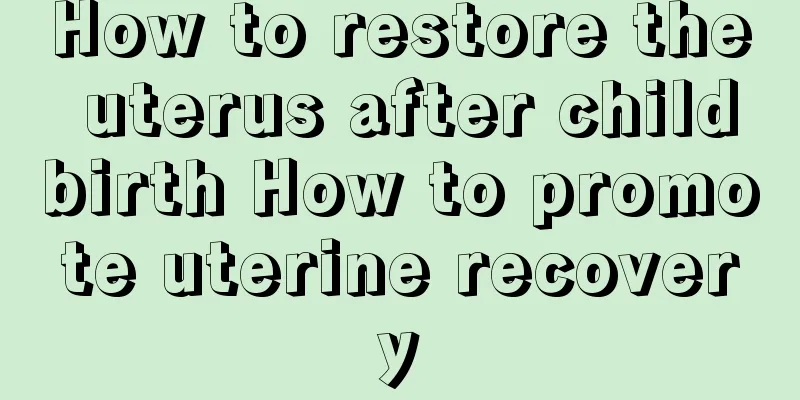Where is the injection for oxytocin? Will it hurt?

|
Generally, when the pregnancy is full, the fetus will be born naturally. However, there are some special cases, such as the baby in the belly does not respond at full term. In this case, it is necessary to induce labor. Where is the injection of oxytocin? Will it hurt? The role of oxytocin injectionIn some cases, pregnant women receive oxytocin injections, which can help induce labor. Oxytocin injections are actually oxytocin, which is commonly used by obstetricians during delivery operations. It can strengthen uterine contractions, thereby facilitating the smooth delivery of the baby. However, not all pregnant women need to use oxytocin injections, nor are all pregnant women suitable for using oxytocin injections, and not all pregnant women can use them whenever they want. An obstetrician at Jilin Guojian Maternity Hospital said that the use of oxytocin injections should be determined by professional obstetricians after the doctor has conducted corresponding examinations on the pregnant woman and the fetus and believes that oxytocin injections are necessary to assist delivery. Where is the oxytocin injection given?Oxytocin injection is the same as intravenous drip. Oxytocin injection is oxytocin, which promotes uterine contraction to dilate the cervix and help with childbirth. It is generally used for mothers with weak uterine contractions. The dosage is strictly controlled and cannot be used at will. It is used according to the uterine contraction situation. It is usually intravenous drip, just like intravenous drip. Is the oxytocin injection an infusion or an injection?Infusion. Oxytocin, also known as oxytocin, is generally not injected intramuscularly. It can only be diluted with saline and used intravenously under the guidance of a doctor. The dosage can be controlled by adjusting the drip rate, thereby controlling the intensity of uterine contraction. Be aware of occasional adverse reactions such as nausea, vomiting, increased heart rate or arrhythmia, and medical staff should monitor closely. Will it be more painful to induce labor?Gynecologists say that pain needs to be compared. Many people say that induced labor is more painful than natural labor, but when asked, these people have never tried to compare. Since oxytocin, prostaglandins, etc. are already present in the human body, theoretically it should not be more painful; however, if the dosage of the induced labor drug is adjusted too quickly, there may be obvious pain. But pain can be adapted. For natural labor, perhaps because the labor process is prolonged, the pain is relatively continuous, but induced labor shortens the labor process, so it feels more painful. Is there anyone who is not suitable for induced labor?Gynecologists say that most people can be induced to give birth, except for those who are allergic to drugs. In addition, mothers with a history of asthma should not use certain drugs containing prostaglandins to induce labor. As for whether there are unsuitable subjects, basically as long as the mother or baby can withstand natural birth, they can be induced to give birth. What situations need to be stimulated?Post-term pregnancy: A pregnancy that reaches or exceeds 42 weeks (i.e., 2 weeks beyond the expected date of delivery) is called a post-term pregnancy. Post-term pregnancy will cause the placenta to age, which will significantly reduce the blood flow in the intervillous space, forming infarction, further reducing blood flow, reducing the oxygen and nutrients supplied to the fetus, and causing the fetus to stop growing. At the same time, the amount of amniotic fluid will also decrease. In severe cases, the fetus may die of suffocation due to lack of oxygen. Early rupture of membranes: rupture of membranes may lead to infection of the uterine cavity or fetal hypoxia. Usually rupture of membranes will cause uterine contractions. If the fetus is mature and there is no labor pain 24 hours after rupture of membranes, induction of labor is necessary. The fetus is too large: If the fetus is too large, dystocia and shoulder dystocia are more likely to occur, so it is best to induce labor. Pregnancy toxemia: Pregnant women with pregnancy toxemia often have high blood pressure combined with edema or proteinuria. This disease may cause epilepsy, stroke, organ failure or even fetal death in the mother. The fetus is usually stunted and may also suffer from fetal distress or death. Pregnancy toxemia can only be improved after delivery, so once the fetus is mature, induction of labor can be implemented. |
<<: The three major pain points of natural childbirth. Is natural childbirth really painful?
>>: What are the delivery methods? How do pregnant women choose the delivery method?
Recommend
What should I do if my baby cries after getting an injection? Don’t use these wrong methods
The so-called vaccination is to vaccinate a healt...
Will it be difficult to regain body shape after a normal birth? Can eating fish relieve depression during pregnancy?
Many people are hesitating between natural childb...
Can children eat eggs when they have a cough? How many eggs are best for children to eat when they have a cough?
Children's cough is usually accompanied by a ...
When does the 13 years of free education refer to? Which 13 years of free education refer to?
When I was graduating from junior high school, th...
Does breastfeeding prevent breast cancer? Does not breastfeeding cause breast cancer?
Can breastfeeding prevent breast cancer? Today, l...
Why does my baby always pull his ears? 6 reasons for pulling ears
Taking care of children is a very hard job, and w...
What is the normal body temperature of a newborn and how to measure it
When a newborn is born, parents need to pay atten...
Do I need to avoid certain foods when taking Tianxi Pills? Do I need to avoid certain foods when taking Tianxi Pills?
Many women who take Tianxi Pills are not clear wh...
How to heat breast milk must be done correctly
Breast milk can be heated, but the heating method...
How long is the best time to breastfeed your baby?
Generally, newborns are breastfed after birth, an...
What is the normal body temperature for babies in summer? Will babies have a high body temperature in summer?
The weather is hot in summer. Many babies who hav...
Can pregnant women eat broccoli? Boosting immunity in pregnant women
Everyone knows that the health of pregnant women ...
Can I take a bath after my baby's fever subsides? What are the effects after my baby's fever subsides?
Children have poor immunity and if parents do not...
What should I do if my baby gets angry after eating milk powder? What should I do if my baby gets angry after eating milk powder?
Many babies have dry stools and increased feces i...
Will diapers cause O-shaped legs? Will diapers affect the health of babies?
When using diapers, many elders feel that it is n...









